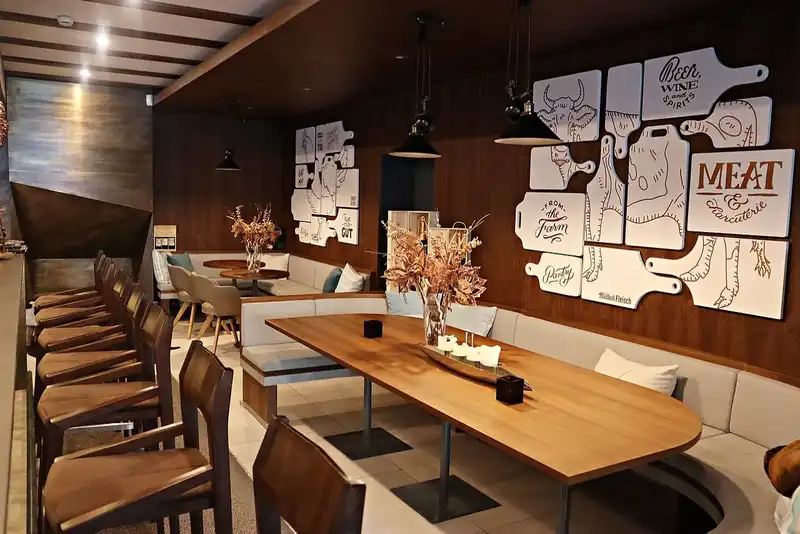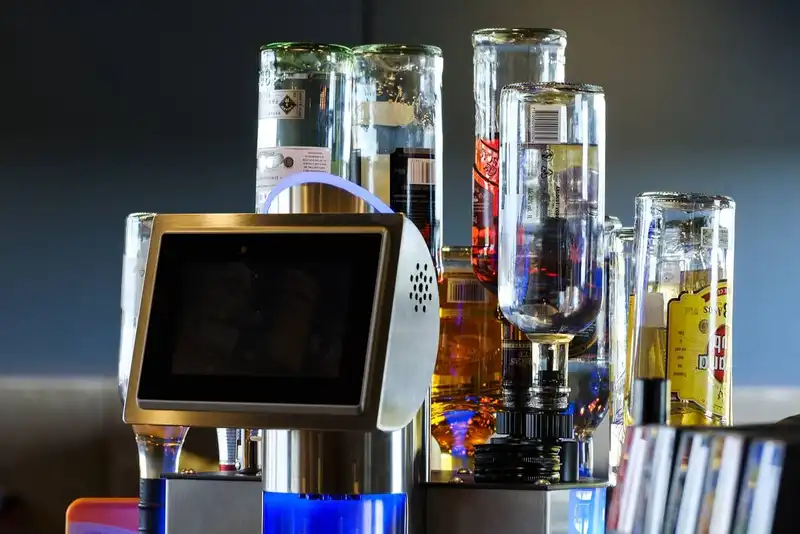To Automate or Not- A Look at Restaurant Automation Systems

Pro's and Con's of Restaurant Automation
Restaurant automation is an increasingly popular technology advancement for restaurant industry businesses. Restaurants have implemented various degrees of restaurant automation with differing levels of success.
For example, the Eatsa restaurant attempted to automate all operations from the time customers place orders all the way to their food delivery system. After customers input their menu item selection their order would be presented in a cube labeled with their name.
Unfortunately, the Eatsa restaurant did not succeed in its restaurant automation experiment, with all 5 locations closing. This did not stop others in the restaurant business from exploring automation. Fast food chains like McDonalds and Wendys have been exploring more automated restaurant operations including quick service capabilities.
Some pros and cons of restaurant automation include-
1. Cost control- Both labor costs and food costs are a huge expense that restaurant owners incur. The labor costs that absenteeism and other scheduling errors create are largely solved through automation.
Not only is automation a cost effective way to confront labor costs but it also decreases labor violations. This is because automated chefs and servers can work 24 hours a day without restaurant owners facing costly labor costs and violations.
Automated chefs decrease variations in ingredient usage which will keep food costs low for a restaurant. As your food costs decrease you may offer some of these benefits to your customer base. Lower food cost and better inventory management capabilities can provide customers with more cost effective menu item options.
Alternatively, the initial investment cost for an automated restaurant is much higher than for a traditional restaurant. Implementing newer technology is expensive and can also carry high maintenance and repair costs.
2. Customer service- There are significant changes in customer service when there is limited to no staff and customer human interactions. In fact, studies have shown that increased technology results in increased human loneliness.
With online ordering and food delivery technology our culture has already mastered the ability to receive food in our own homes without engaging with another human being. Transferring this technology to the front house dining experience may decrease the customer experience and customer service capabilities for people who highly value interpersonal interaction.
Alternatively, some people prefer the customer service abilities that automation offers. Instead of having to wait for staff members to help them, customers can place orders through the ordering system and have real time quick service receiving their food.
For people who are in a hurry, an automated system restaurant can get them fed and back to their day as quickly as possible. Depending on an individual's customer service priorities, automation can be helpful or hurtful.
3. Troubleshooting- Many people have experienced the contradiction of technology actually complicating basic tasks more than simplifying them. Technology in the restaurant industry is no different, with restaurant operations potentially becoming more complicated with automation.
If a customer is not comfortable navigating automated systems they may feel embarrassed and overwhelmed, even leaving your restaurant. For this reason, it is helpful to have at least some human staff members available to assist with technological issues.
For tech savvy people, restaurant automation can majorly increase convenience and the overall customer experience. Knowing your customer base is crucial in deciding what level of automation is appropriate for your restaurant.
How to Automate a Restaurant

Restaurant owners who are interested in the benefits of automation may still feel unsure about how to best become more automated. Thankfully, there are tips available to help restaurant owners spend less time in the back office on menial tasks and more time in the front house interacting with their customers, including-
1. Table ordering system or self service kiosks- If your restaurant is a sit down restaurant you may decide to allow customers to place orders at either a self service kiosk or from an ordering system located at their table. For an ordering system located at their table, you can provide mobile app access or designated iPads, depending on your budget and preference.
An ordering system easily incorporates your loyalty program and can even provide games for customers to play while they wait for their food. Plus, your younger clients are more likely to report back to their social media about an engaging technological experience as well as leave a glowing online review that will serve as free advertising and promotion for your restaurant.
2. Mobile ordering capabilities- Customers spend more on mobile orders than they do on in person ordering. The ability to order food for pick up from a mobile app that is cloud based is a cost effective way to increase sales.
If you do offer online ordering make sure that you have real time updates on the order progress and a loyalty program in place to increase the customer service experience. If a customer does have a negative customer service experience during online orders it is important to quickly address and remedy the situation to avoid losing their business in the future.
3. Check out system- One of the most frustrating parts of eating out is waiting too long for a server to bring your check to the table. To avoid this negative customer service interaction, allow customers to check themselves out.
Not only will self check out decrease labor costs and increase the customer service experience, but your restaurant's table turnover will also be optimized.
4. Pos system- A fantastic pos system is a staple of restaurant management software that increases the efficiency of restaurant operations and boosts customer experience. A pos system can help with a wide range of tasks from inventory management to food cost analysis.
As you increasingly automate your restaurant business it is important that the foundational aspects of your restaurant management software are strong. Building off a solid foundation will provide the most seamless switch to a more automated restaurant for both restaurant owners and their customers.